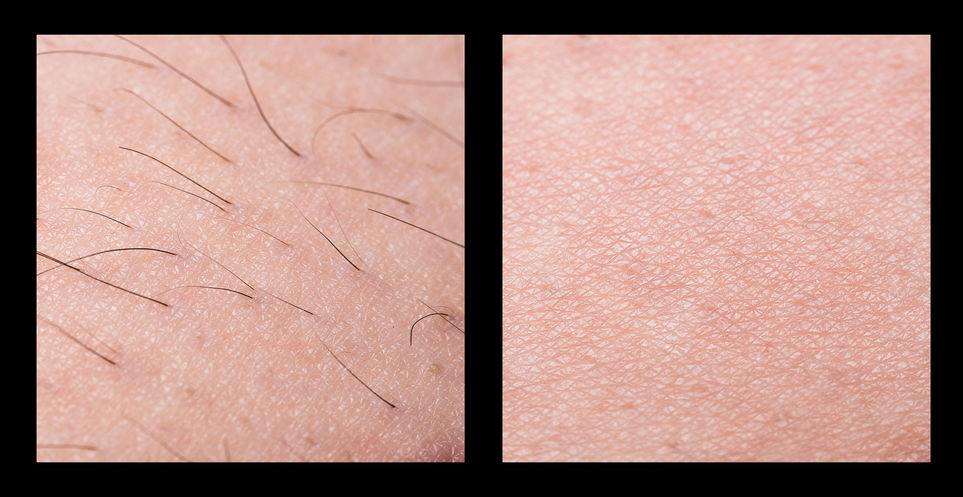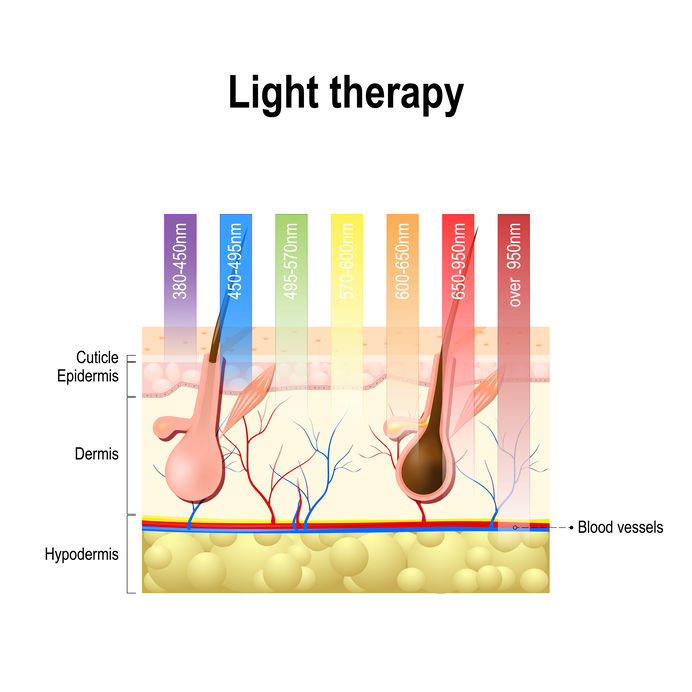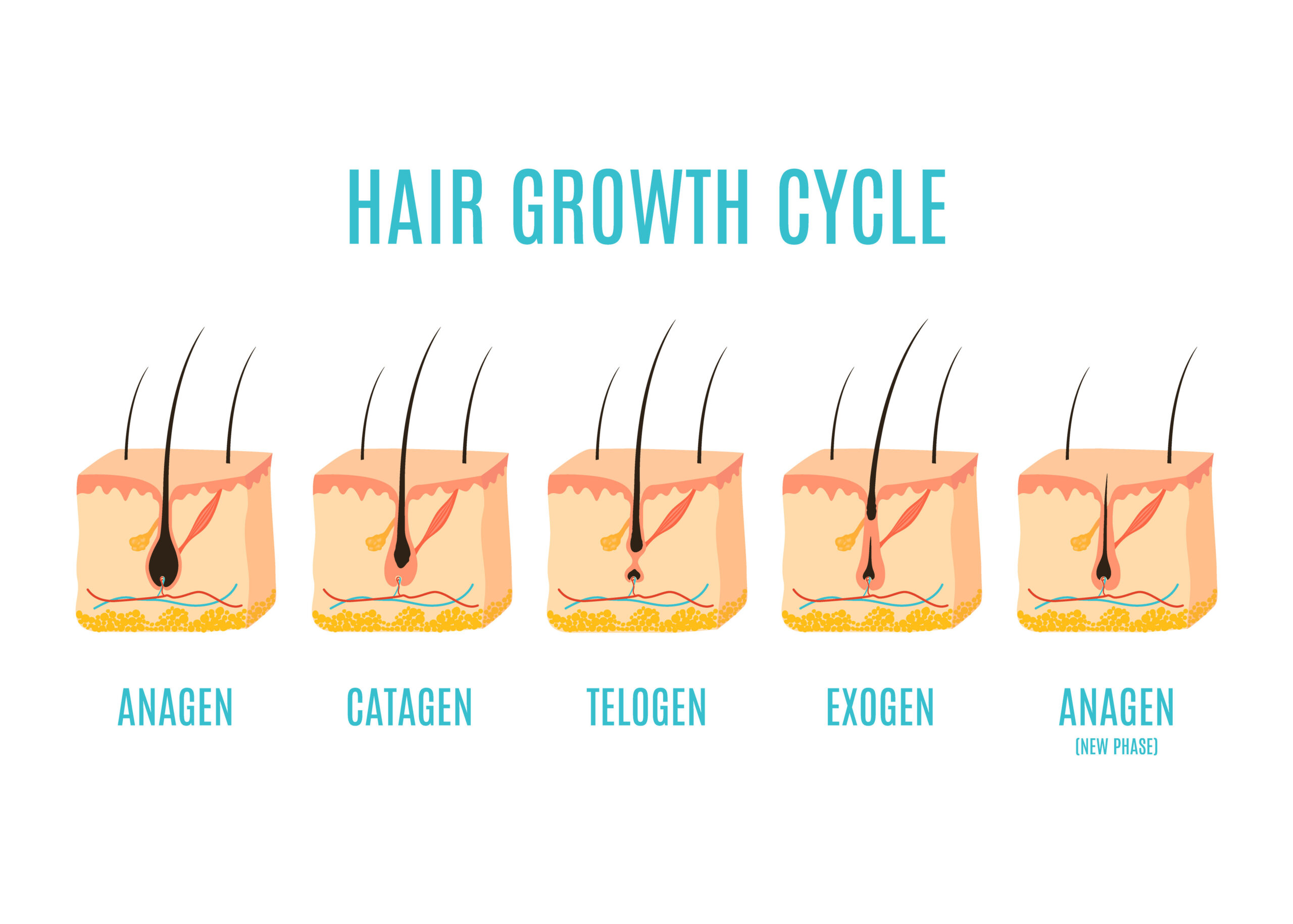What Does It Really Mean And What Results Can I Expect?
Permanent hair removal is an interesting goal because it means different things to different people.
Permanent means forever. So if you eliminate hair with your chosen hair removal option and are told it is permanent, you would be disappointed and feel ripped off if hair grows back again. That would be a natural response.
But is the same hair actually growing back…or is it new hair, that was previously dormant, that has now grown and needs to be treated accordingly?
Therein lies the problem.
What Is Permanent Hair Removal?
Hair grows in cycles and only hair that is above the skin at the time of treatment can be removed. This applies whether you are using laser, Intense Pulsed Light, electrolysis, waxing, shaving, depilation, threading, sugaring or any other hair removal process you can think of.
So if a hair is successfully treated with your chosen hair removal method and never grows back again, there is nothing stopping new, previously dormant hair from growing near the same area and effectively replacing it. From your perspective, you can’t tell which hair is which and you probably don’t care. You just want the hair gone.
And you assume that your hair removal process didn’t work because you still have hair. So a few things are worth keeping in mind:
Hair grows in cycles
Permanent or long term hair removal takes time because hair doesn’t all grow at the same time and can only be treated when it is visible, above the skin in the growth phase (certainly when it comes to laser and IPL).
Electrolysis = permanent hair removal
Electrolysis is the only true method of permanent hair removal with repeated treatments. Laser and IPL offer permanent hair reduction. Laser and IPL can offer permanent hair reduction also with repeated treatments.
Skin color and hair color are relevant
Certainly for laser and IPL treatments. In general terms, laser and IPL traditionally work best for people who have dark hair and light skin. Newer lasers better assist people with dark skin and light hair but blonde hair, red hair and gray hair are still very difficult to treat with these technologies. Check out my laser hair removal main page for more info.
Permanent Hair Removal Research

When you hear about permanent hair removal or reduction, you might like to know what that actually means. Aesthetically, how much less hair can you expect to have and what will the result look like?
That’s normally why people want hair removed, right? We desire a better look and want to be hair free as close to 100% as possible.
Galvanic Electrolysis Research
A 2004 research report profiled three patients who each received between 3-15 galvanic electrolysis treatments. The results were as follows:
report profiled three patients who each received between 3-15 galvanic electrolysis treatments. The results were as follows:
In patient 1, biopsy of the bikini area 1 year post-treatment demonstrated induced alopecia, with very few hair follicles present.
In patient 2, biopsy after 15 treatments demonstrated that large follicles had been changed to small follicles with beginning perifollicular fibrosis, indicating that destruction of the hair follicle had begun.
In patient 3, a hair count by the principal investigator showed that hair count had decreased from 30 to 15 hairs after 3 treatments.
Oxford Academic
Patient 1: The treatment introduced hair loss and an overall visible reduction in unwanted hair.
Patient 2: “Destruction of the hair follicle had begun” means that if and when the follicle is destroyed, no hair will ever grow back in that area ie. permanent hair removal is achieved.
Patient 3: Hair removal of 50% was achieved. So half of unwanted hair was removed.
Light-based and Laser Treatments Combined
Here’s an interesting study: Patients were treated with both light-based hair removal treatment (IPL) and then with laser (Alexandrite and Diode) and the results were compared to see how each option performed:
Evaluation of photographs at 1, 3, and 6 months revealed a significant decrease in hair counts (∼50%) and hair coverage (∼55%). In the hairs that remained after two treatments, no statistical difference was noted in hair length or diameter.
Taylor & Francis Online
So total unwanted hair was reduced by about 50% and the coverage of the unwanted hair that was removed was about 50%. So in general terms if the back area was being treated, about half the unwanted hair was removed on a little over half of the back.
The report concluded:
Although hair removal with commonly used systems is, as expected, highly effective, treatment with light‐based devices can cause less pain, yet show efficacy similar to laser systems.
Taylor & Francis Online
So the report concludes that IPL and laser hair removal offer similar results but IPL hurts less. It’s an interesting conclusion because fast forward to present day (this report was submitted in 2005) and most hair removal breakthroughs are with laser technologies and not IPL.
It should also be noted that in both cases the results of the patients’ hair removal was only monitored up to 12 months after treatment, at the high end.
Laser Hair Removal Wavelength

The letters in the word laser stand for Light Amplification by Stimulated Emission of Radiation. A laser is an unusual light source. It is quite different from a light bulb or a flash light. Lasers produce a very narrow beam of light. This type of light is useful for lots of technologies and instruments…
Light travels in waves, and the distance between the peaks of a wave is called the wavelength.
NASA Science Space Place
Wavelength is measure in nanometers or nm and there is an ideal wavelength range for laser hair removal:
Melanin absorbs wavelengths between 600-1100nm, the recommended optical window for hair removal with the destruction of the follicular unit.
pmfa Journal
Melanin is a skin pigment that appears in our hair, skin and in the iris of our eyes. The more melanin we have, the darker our hair, skin and eyes. Laser hair removal targets the melanin in our hair so people that have little melanin (ie. they have very light hair) usually cannot experience success with laser or IPL treatment.
The wavelengths for the four lasers used for hair removal are:
Ruby Laser: 694 nm
Alexandrite Laser: 755 nm
Diode Laser: 800 nm
Nd:YAG: 1064 nm
If you take a look at the diagram above you can see how deep each laser technology penetrates into the skin. The deeper the penetration to the bottom of the hair follicle, the more likely you’ll not see future hair growth.
So why doesn’t everyone just go for the Nd:YAG laser which has the highest wavelength?
The Nd:YAG laser:
- May be painful for some people
- Doesn’t work well on fine (very thin) hair
- Doesn’t work on white, red or gray hair
- Not all clinics that offer laser hair removal have an Nd:YAG machine.
Conclusion
- While electrolysis offers permanent hair removal, it may take time and multiple treatments to achieve.
- IPL and laser can offer permanent hair reduction over time and with multiple treatments but what does reduction entail and specifically mean? Specific results as shown above need to be understood to temper expectations.
- As mentioned above, research seems to suggest that around 50% of unwanted hair might be removed over time for a visually better appearance.
- Laser and IPL hair removal doesn’t work on all skin types or hair colors.
Recent Posts
Laser hair removal may not be as effective for individuals with red hair, as well as those with blonde, gray, or white hair, because the laser targets the pigment (melanin) in the hair follicle....
Laser remains a very popular form of hair removal and for several reasons. While not a permanent hair removal option like electrolysis, the benefit of laser is that it enables you to treat more...


